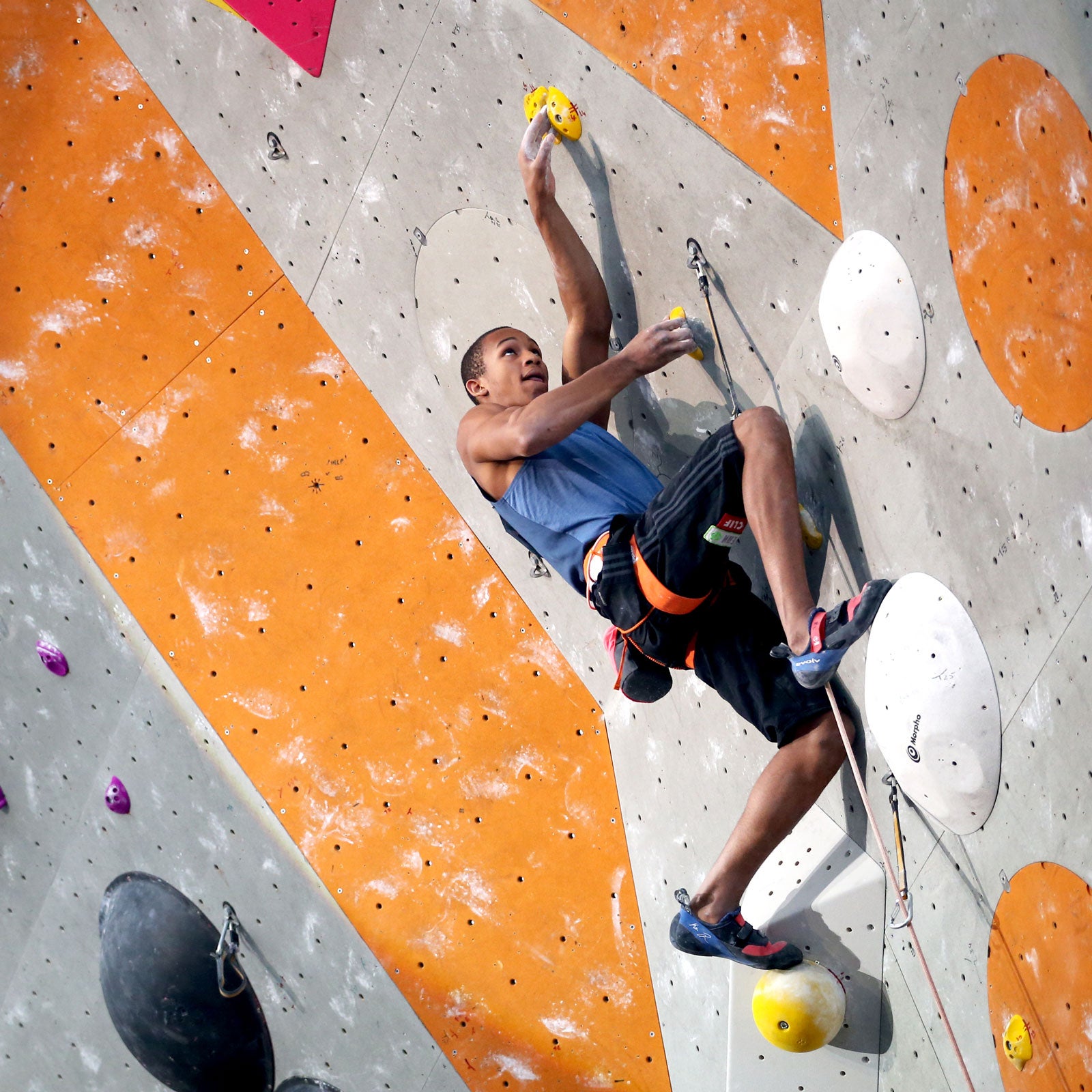Before you start cragging outside, you probably want to perfect your climbing skills at the gym. Thankfully, getting started is easier (and cheaper) than you might think. Below, five professional climbers share their favorite gear for beginners looking to get off the ground.
Evolv Defy Rock Climbing Shoes ($89) and MobilityWod Supernova 2.0 Massage Ball ($40)
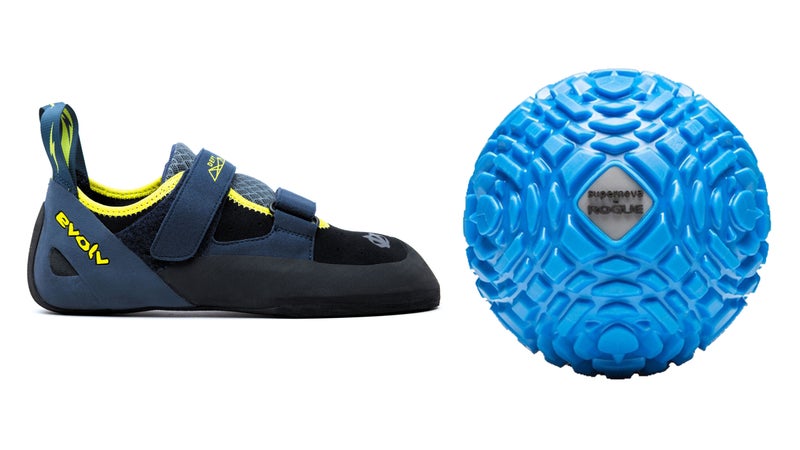
Kai Lightner, Professional Climber
For the gym, Evolv-sponsored climber and national championship winner Kai Lightner recommends the , because they’re comfortable (as far as climbing shoes go), have an easy hook-and-loop strap system, and sport a vegan-friendly synthetic upper. “For beginners who are buying their first pair of shoes, it’s important to try on many different styles and sizes to find the best fit—one that is comfortable and snug without being too tight,” Lightner says. These reasonably priced all-arounders feature an antimicrobial liner to keep the funk at bay.
Lightner also carries to relieve kinks and muscle tension after climbing. “Foam rollers are great at home but bulky for travel,” he says. “This massage ball accomplishes the same goal in a more travel-friendly size.”
8bPlus Kelly Chalk Bag ($30) and Chalk Cartel Climbing Chalk ($16 for 8.82 Ounces)
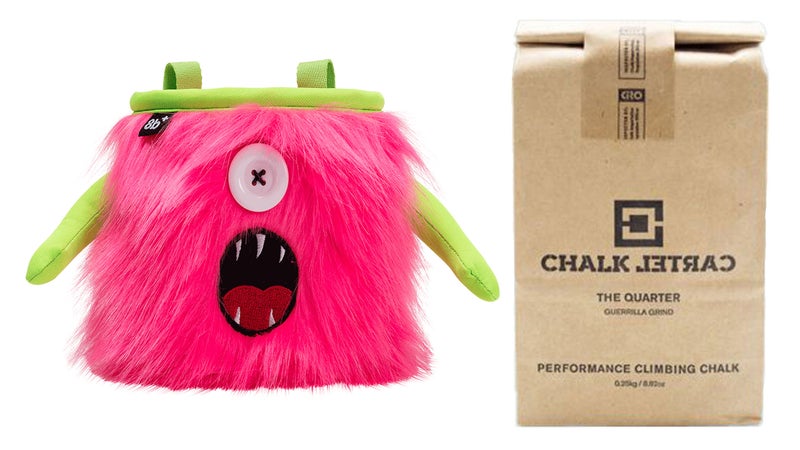
Ben Hanna, Professional Climber, World Cup Competitor
Ben Hanna brightens things up with his from 8bPlus. “They’re a good way to keep climbing fun and lighthearted,” he says. Besides its crazy looks, this chalk bag has a wide five-inch opening for quick and easy hand access, a brush holder on either side, and a carabiner and waist belt for versatile attachment. The best part? Each monster has its own name and backstory to go with its personality. “I am a fan of Kelly, cuz pink,” Hanna says.
Hanna fills Kelly with , an up-and-coming company based in New Mexico. “They’re local, and I think they have the best chalk on the market,” he says. Chalk Cartel sells its high-quality magnesium carbonate by the quarter or kilo in eco-friendly packaging at a reasonable price.
Petzl GriGri+ Belay Device ($150)
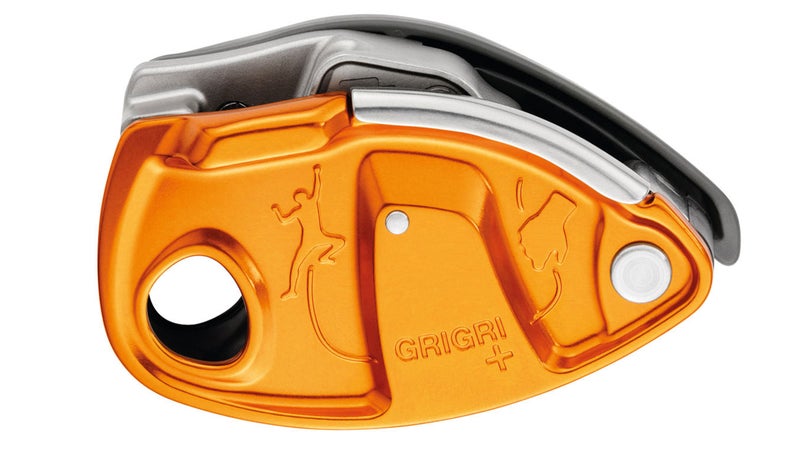
Michaela Kiersch, Professional Climber, Youth Climbing Coach
As the first woman to send Necessary Evil (5.14c), Michaela Kiersch knows the importance of a good belay. “The GriGri+ is an absolute must,” she says. “This belay device offers top-of-the-line safety features, including an anti-panic handle to prevent rapid and uncontrolled lowering.” This is good for beginners, with lead and top rope belay modes for easy handling and an extended rope diameter range of 8.5 to 11 millimeters. “Another great feature is the stainless-steel wear plate, which gives the device a longer lifespan,” Kiersch says.
Camp Energy Harness ($50) and Addaday Nonagon Foam Roller ($35)
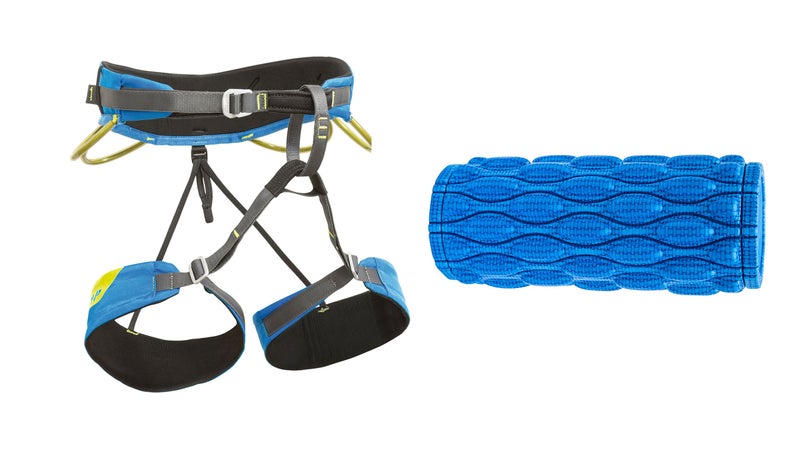
Ben Rueck, Professional Climber
Ben Rueck’s list of accomplishments includes climbing the first ascent of Pure Pressure (5.14a), but the Camp-sponsored athlete often sees new climbers get ahead of themselves by buying the most expensive gear right away, which can be overkill for the gym. “I recommend starting out with a simple, clean, and comfortable harness like Camp’s Energy,” he says. The has thermoformed padding, adjustable leg loops, four gear loops, and a haul loop—at a price that won’t break the bank. It’s lightweight and versatile and serves as an “easy transition harness to the outdoors,” Rueck says.
To stay loose and accelerate his recovery process, Rueck rolls out with after training and gym sessions. The 13-inch-long roller has an EVA foam core and nine sides with a textured surface to hit the sore spots. “I enjoy rolling out for about ten to 15 minutes, mostly focusing on legs, back, and shoulders to create mobility,” Rueck says.
Rhino Skin Solutions Repair Cream ($9) and Rhino Split Stick ($3.75)
Nina Williams, Professional Climber
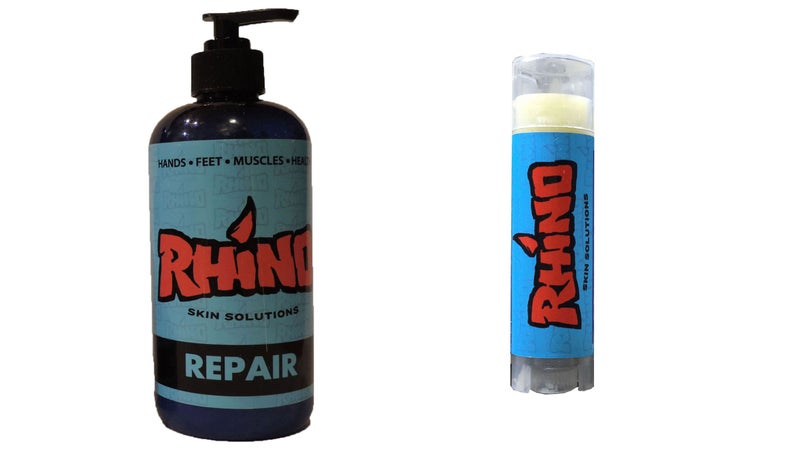
Pulling on plastic quickly wears down your hands, especially for newer climbers who haven’t built up callouses. But Nina Williams, the first female to send Ambrosia, has a solution. “Rhino Skin Repair Cream is great for stinging, post-gym-sesh hands, because you can put it on right after climbing once you’ve washed the chalk off your hands,” she says. Unlike wax-based hand balms, is a nongreasy lotion that absorbs quickly after application, so you won’t leave streaks on everything you touch. “It sinks into your skin instead of hanging out on the surface,” Williams says. “Feels great, smells great.”
Williams also keeps a on hand for quick spot-treatment to flappers, splits, and problem creases. “My hands are naturally super dry and crack easily,” she says, “but Rhino Skin fixes it the fastest.”


